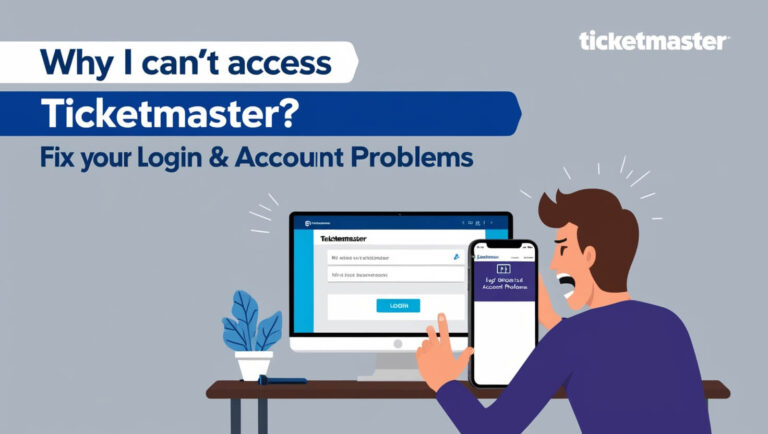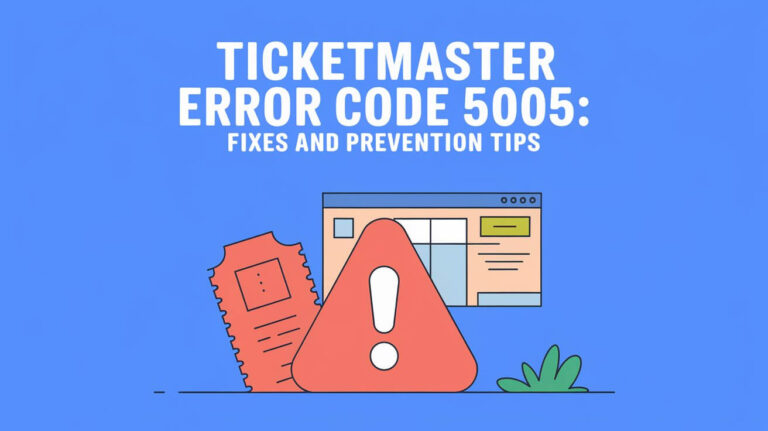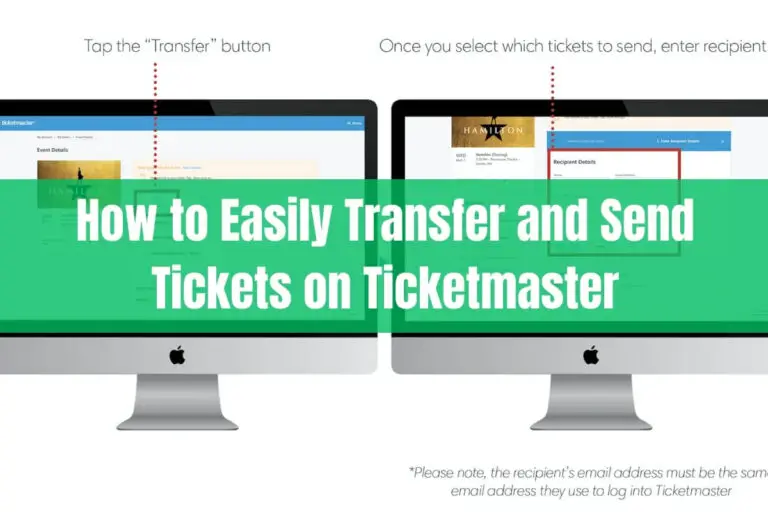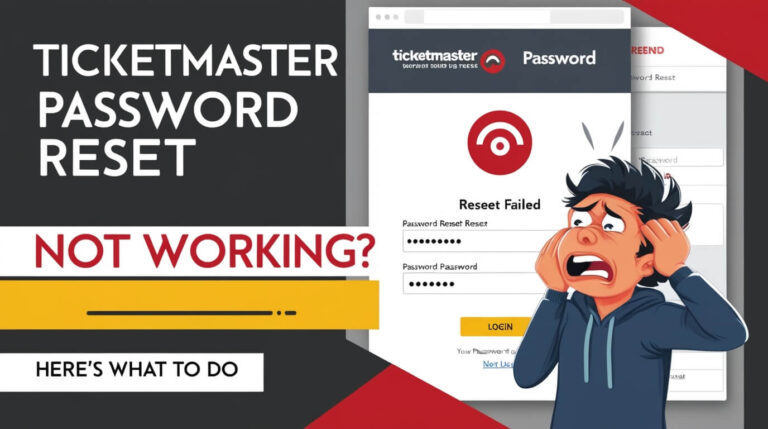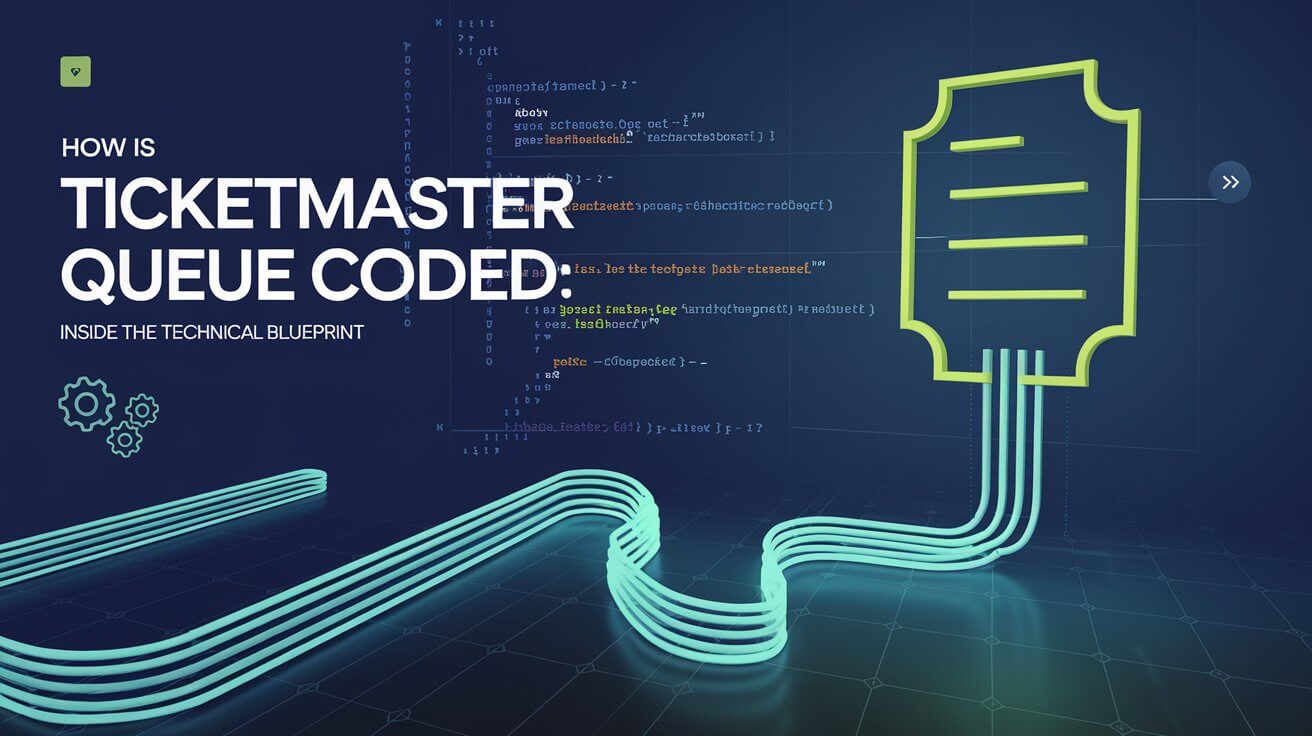
The Ticketmaster queue system powers millions of ticket sales through advanced coding that manages traffic surges and ensures fair access. This sophisticated virtual waiting room uses randomization algorithms, security protocols, and traffic management systems to handle high-demand events.
The Core Architecture of Ticketmaster’s Virtual Queue System
Queue Randomization Algorithm
The queue system’s foundation relies on a specialized randomization code that assigns virtual line positions to users. When tickets go on sale, the system activates its position assignment protocol. The code generates unique queue IDs for each user session, preventing position conflicts or duplicates.
Unlike basic first-come-first-served systems, Ticketmaster’s queue uses complex algorithms to fairly distribute positions. The code refreshes the temporary queue when sales begin, assigning random spots to everyone waiting. This prevents unfair advantages from entering the queue hours early.
Traffic Management Framework
The queue’s traffic management code constantly monitors user flow and server load. When traffic spikes occur during major ticket releases, the system automatically adjusts its distribution patterns. The code maintains stable performance by controlling how many users can access the ticket selection process simultaneously.
The framework includes specialized load balancing algorithms that prevent server crashes during peak demand. These algorithms distribute traffic across multiple servers while maintaining consistent queue positions for users.
User Authentication Systems
Behind the queue interface, robust authentication code verifies legitimate users. The system checks for valid Ticketmaster accounts and proper access codes before allowing entry into the waiting room. This authentication layer helps filter out automated bots and unauthorized access attempts.
Technical Components of the Queue Code
Queue ID Generation Process
The queue coding generates unique identifiers for each user session. These IDs allow users to maintain their positions even if they experience connection issues. The system tracks these IDs through the entire purchase process, ensuring position stability.
Recent code updates have improved ID persistence. Users can now refresh their browsers without losing queue positions, thanks to enhanced session management protocols. The queue ID remains valid for 10 minutes once a user reaches the front of the line.
Auto-Refresh Mechanisms
Ticketmaster’s queue incorporates automatic page refresh code that updates user positions without manual intervention. This feature prevents users from losing their spots by eliminating the need for manual refreshing. The code executes these updates at regular intervals, keeping wait time estimates accurate.
The auto-refresh system includes fail-safes to prevent accidental position loss. If connection issues occur, the code attempts to recover the session using the stored queue ID.
Session Management Tools
The queue’s session management code tracks user activity throughout the ticket buying process. It monitors idle time, browser status, and connection stability. When users reach their purchase window, the code maintains their session for a 10-minute period.
These tools include timing mechanisms that release unused sessions back into the queue. This helps maintain efficient flow and prevents blocked sessions from affecting other users.
Load Distribution Systems
Advanced load distribution code ensures smooth operation during high-traffic events. The system scales resources automatically based on demand levels. Server capacity adjusts in real-time to handle sudden traffic increases.
The code includes backup systems that activate during extreme load conditions. These systems prevent complete service interruptions by routing traffic through alternative pathways.
Bot Detection and Security Features
Traffic Access Rules Implementation
The queue’s security code implements strict traffic access rules to identify and block suspicious activity. These rules analyze user behavior patterns and network signatures. The system flags potential bot activity based on multiple criteria.
The code continuously updates its detection parameters to counter new bot techniques. Machine learning algorithms help identify emerging patterns of automated access attempts.
IP Filtering Methods
Sophisticated IP filtering code monitors and manages access attempts from different network sources. The system tracks unusual patterns of multiple connections from single IP addresses. Advanced filtering algorithms detect and block VPN and proxy abuse.
The code maintains IP reputation databases to identify known sources of suspicious activity. This helps prevent mass ticket purchases through automated systems.
Behavioral Pattern Analysis
The queue system includes behavioral analysis code that monitors user interactions. Natural user patterns differ significantly from automated behaviors. The system tracks mouse movements, page interactions, and timing patterns.
This analysis helps identify suspicious activities like:
- Multiple simultaneous purchase attempts
- Unnaturally fast form completion
- Identical behavioral patterns across sessions
- Suspicious timing of actions
Account Verification Protocols
The verification code ensures proper account authentication throughout the queue process. It validates user credentials and purchase eligibility. Additional verification layers activate for high-demand events.
Queue Position Assignment Technology
Random Number Generation
The position assignment code uses advanced random number generation algorithms. These algorithms ensure fair distribution of queue positions when sales begin. The system prevents position prediction or manipulation.
The code refreshes all temporary queue positions at the official sale time. This creates an equal chance for all users in the waiting room, regardless of arrival time.
Priority Access Coding
Special code handles priority access for authorized user groups. The system recognizes various priority levels based on:
- Fan club memberships
- Presale access codes
- Special event privileges
- Previous purchase history
Wait Time Calculation Systems
Complex algorithms calculate estimated wait times for each queue position. The code factors in:
- Current queue position
- Average transaction time
- Number of active shoppers
- Available ticket inventory
- Server performance metrics
Position Update Mechanisms
The queue constantly updates user positions through specialized tracking code. Real-time calculations adjust wait times based on current conditions. The system provides accurate progress updates without manual refresh.
User Interface Integration
Real-Time Status Updates
The interface code delivers continuous status updates to users. Clear visual indicators show:
- Current position in line
- Estimated wait time
- Queue progress
- System status alerts
Browser Compatibility Code
The queue system includes extensive compatibility coding for different browsers. This ensures consistent performance across:
- Chrome
- Firefox
- Safari
- Edge
- Mobile browsers
Mobile Response Adaptation
Specialized mobile adaptation code optimizes the queue experience for smartphones and tablets. The system adjusts display elements and touch interactions automatically. Mobile users receive the same queue stability as desktop users.
Error Handling Protocols
Robust error handling code manages various technical issues. The system provides clear error messages and recovery options. Automatic recovery procedures help maintain queue positions during technical problems.
Queue Performance Optimization
Traffic Surge Management
The optimization code includes sophisticated surge handling capabilities. These systems prevent performance degradation during extreme demand. Load balancing algorithms distribute traffic across multiple servers.
Server Response Times
Performance monitoring code tracks and optimizes server response times. The system adjusts resource allocation based on demand levels. Automatic scaling helps maintain consistent response speeds.
Database Load Balancing
Advanced database management code prevents bottlenecks during high-volume sales. The system distributes database queries across multiple servers. Caching mechanisms reduce direct database access requirements.
Cache Implementation
Strategic caching code improves system performance and reduces server load. The system stores frequently accessed data in high-speed memory. This reduces database queries and improves response times.
Common Queue Issues and Solutions
Technical Troubleshooting
The queue system includes automated troubleshooting code for common issues. Error detection algorithms identify specific problems. The system suggests appropriate solutions based on error types.
Common technical solutions include:
- Browser cache clearing
- Cookie management
- Connection verification
- Session recovery
Browser Compatibility Fixes
Specialized compatibility code handles browser-specific issues. The system detects browser types and versions automatically. Appropriate adjustments ensure consistent functionality across platforms.
Connection Problems
Network issue detection code monitors connection stability. The system attempts automatic recovery during brief interruptions. Clear guidance helps users maintain their positions during connectivity problems.
Account Access Issues
Account verification code helps resolve login and access problems. The system provides specific error messages for account issues. Automated recovery procedures help users regain queue access.
Future Queue Technology Developments
Upcoming Technical Changes
The queue system continuously evolves through code updates and improvements. New features focus on enhanced security and performance. Future updates will introduce more sophisticated bot detection methods.
Advanced Security Features
Planned security code improvements will strengthen protection against automated purchases. New authentication methods will enhance account verification. Additional behavioral analysis tools will improve bot detection.
User Experience Improvements
Future code updates will enhance the queue interface and functionality. Planned improvements include:
- More accurate wait time estimates
- Enhanced mobile experience
- Improved error recovery
- Better status notifications
Ticketmaster’s queue system represents a sophisticated blend of various coding technologies. The system continues to evolve, balancing fair access with security requirements. This technical foundation ensures stable performance during high-demand ticket sales while maintaining a smooth user experience.

